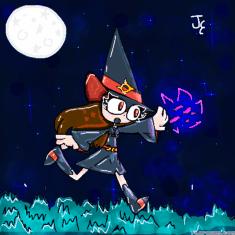Open Species!


41 comments

-Lucid[OP]
14.03.2020 20:59
LinkSo, you’re looking to adopt a Yoli? Well, I can’t blame you! They are amazing and unique creatures. However, before you go and take one in, there are several things you should know!
* Diet
You may have noticed that Yolis possess four separate muzzle sections. At first, it may appear as though they are carnivorous and dangerous, but in reality, they are omnivores! They can feed off of various species of berries, nuts and seeds. However, they primarily feed off of small, flying animals and insects. Their method of hunting is what makes them so special. They will often find a predator free spot, sit down, and open their jaws wide. They emit the scent of pollen and have special glands that mimic the color of flowers in ultra violet light (which is how many pollinators view the world). Once a creature gets close enough, they will snap their jaws shut and swallow their prey whole. Their throats have a segment of spines that essentially tear the meat off of their prey, and they will cough up the bones when they ar

-Lucid[OP]
14.03.2020 20:59
Linkfinished. The process of swallowing takes about two and a half minutes, leaving them vulnerable. Their main source of protein comes from bats and small birds, but they will still eat small insects, like flies, bees and butterflies. In order to maintain this diet, they are completely immune to bee/wasp/hornet venom. They enjoy honey as a special treat, and will often seek out beehives, both for the honey, and the bees. Due to their large jaw size, they can grab the hive in their mouth, tear it off the tree, and take it down to their den for consumption.

-Lucid[OP]
14.03.2020 21:00
Link* Appearance
The most distinct features of Yoli are the split jaws, the ear mouths and tail mouth. This is an awful lot of teeth for something that lives so passively. And you’d be right, if it wasn’t for the fact that every predator is out to get them. Yoli are small, a little bigger than the average cat, and are generally preyed upon by much larger animals. Their teeth are usually used for defense as well as to help them grab onto things. With jaws that expand, they can fit large objects in their mouths. However, they will use their teeth to defend themselves. If they lock on to an arm or leg, that limb’s good as gone. They twist their head, creating a sawing motion and can cause serious damage, not to mention their saliva possibly causing the wound to become infected. The teeth on their ears and tail are also used for defense, for when their head can’t reach their enemy. Another note is that their eyes are located on the side of their head, rather than the front.

-Lucid[OP]
14.03.2020 21:00
Link This likely resulted in making room for larger jaws, but it also allows it to have wider peripheral vision. While they can see all around them, they are very near sited, and often will accidentally run into things. Their paws have long, flexible toes, and they are equipped with opposable thumbs. Combined with their long claws, they are excellent at climbing trees and can pick things up. However, due to the rest of their body structure, they cannot carry things in their paws or easily maneuver things around with their paws. Females generally have bright coloring in warm pallets, but their appearance changes depending on which region they’re found in and what season it is. They adopt a more colorful pallet the nearer you get to the equator, while most northern species have duller, cooler colors. Males are always found with a muted blue gray complexion.

-Lucid[OP]
14.03.2020 21:00
Link* Behavior
Yoli have distinct personalities, but are generally skittish around people at first. If they are shown hospitality, they will begin to let their true colors show. Males are more aggressive, juvenile males being the most aggressive. As a result, males typically do not get along well, and it is advisable not to adopt more than one male Yoli at a time, unless you want a riot on your hands. Females are more sociable, but conflicting personalities are still common. Yoli mate for life, and usually have three pups. The pups are always born with white fur, and their colors begin to show during the juvenile stage. Yoli are highly protective of their owners, and will often open their jaws and emit a hissing noise when they recognize their owner is being approached by a potential threat. They are mischievous creatures, and will often explore the kitchen and can be found stealing sweets. They enjoy hoarding shiny objects and honey in their dens, and will want a makeshift den in your house.

-Lucid[OP]
14.03.2020 21:00
LinkA cardboard box with some wool blankets usually works perfectly. Additionally, they are extremely chatty, and make a wide variety of noises, including barking, whining, hissing, growling and howling, to name a few.
* Conclusion
Now that you know all about what adopting one of these creatures entails, don’t hesitate to get your own! If you have any additional questions or comments, let me know and I’ll try to respond as soon as I can!

-Lucid[OP]
14.03.2020 21:02
LinkSorry for making you read all that, but I want to be thorough in presentation of any information about this species. As long as you don't try to claim it as your own creation or say that only certain people can have one, it's completely fair use

DUDE,
Okay first off, the design is extremely unique and interesting, and the lore/behavior makes it feel like a real animal, oml I love them already

I want one, but I want to have one that is unordinary, unique, like, instead of how big it is ( Like almost an average cat ) I want it to be b i g . Like, let's say an adult height or teenager ( depending on it, I'd say average, cause how tall people can be oh my lord- ) and I want a male, but it to be soft af to anyone they see, like they aren't aggressive at all, y'know? But I love the species smh.
Comment removed














